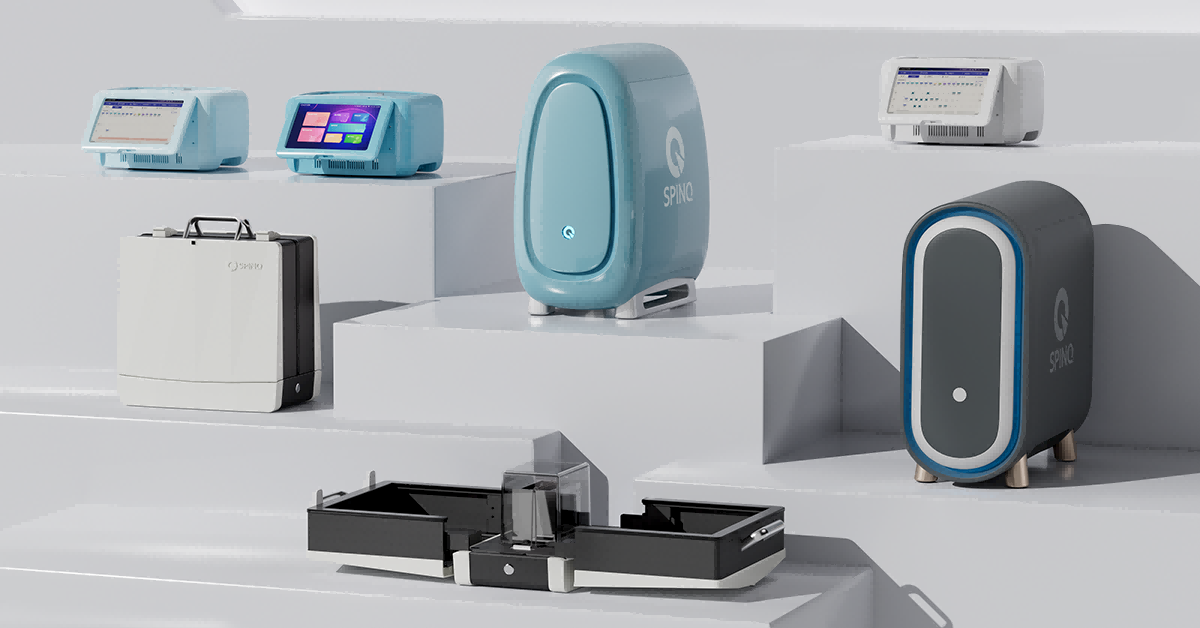Quantum Education: Building Tomorrow's Workforce Through Revolutionary Learning
2025.09.12 · Blog Quantum Education
The quantum revolution is no longer a distant future concept—it's happening now, transforming industries from healthcare to finance while creating unprecedented demand for a quantum-literate workforce. Quantum education has emerged as the critical bridge between today's classical computing paradigms and tomorrow's quantum-powered solutions, fundamentally reshaping how we prepare students and professionals for the technologies that will define the next century.
The Quantum Education Imperative

The numbers tell a compelling story about the urgency of quantum education. The quantum computing market reached $1.07 billion in revenue in 2024 and is projected to grow to $2.2 billion by 2027. Yet this explosive growth faces a significant bottleneck: talent shortage. McKinsey research reveals that by 2021, the global ratio of graduates in quantum-related fields to job openings had reached a staggering 1:3—only one qualified candidate for every three specialized positions.
This talent gap represents both a challenge and an extraordinary opportunity. Quantum education addresses this shortage by creating accessible pathways for learners at every level, from K-12 students exploring quantum concepts through interactive experiments to professionals transitioning into quantum careers through specialized certification programs.
The Evolution of Quantum Learning Pathways
K-12 Quantum Education: Planting Seeds of Innovation
The most revolutionary development in quantum education is its successful integration into K-12 curricula. Texas is pioneering this transformation, becoming one of the first states to include quantum principles in its Essential Knowledge and Skills curriculum standards. The University of Texas at Arlington's groundbreaking "Quantum for All" program has already trained nearly 70 high school teachers, demonstrating that quantum concepts can be effectively taught to younger learners when supported by appropriate pedagogical approaches.
This K-12 quantum education initiative addresses a critical need: expanding the diversity and breadth of students exposed to quantum concepts. As Emily Edwards from Duke University notes, "We must tap into the talents of students from diverse demographic groups in order to maintain our leadership in science and technology". Early exposure to quantum science can spark excitement about STEM careers and create more inclusive pathways into the quantum workforce.
University Quantum Programs: Depth and Specialization
Universities worldwide are rapidly expanding their quantum education offerings to meet growing demand. Stanford University, with its Q-FARM (Quantum Fundamentals, ARchitectures, and Machines) initiative, exemplifies this comprehensive approach by bringing together experts from physics, engineering, and computer science. The Stanford Quantum Computing Association hosts workshops and hackathons that give students hands-on experience with quantum technologies.
Harvard University's Quantum Initiative demonstrates how institutions are creating interdisciplinary programs that span multiple departments. Their Ph.D. program in Quantum Science and Engineering allows students to work with faculty from both science and engineering departments, designing individualized research paths tailored to specific quantum applications.
The global nature of quantum education expansion is evident in the international collaboration between IBM, Keio University, the University of Tokyo, Yonsei University, Seoul National University, and the University of Chicago. This partnership has already brought quantum education to over 2,400 students and aims to prepare 40,000 students for the quantum workforce.
Professional Development and Industry Training
The quantum industry's rapid growth demands accessible retraining programs for working professionals. IBM's Qiskit Global Summer School attracts thousands of participants annually, providing intensive training in quantum programming and algorithm development. Similarly, Microsoft's Azure Quantum offerings include comprehensive training modules that enable professionals to integrate quantum computing into existing workflows.
SpinQ's Revolutionary Approach to Quantum Education
Making Quantum Computing Tangible
SpinQ has fundamentally transformed quantum education by making quantum computers accessible, affordable, and practical for educational environments. Unlike traditional quantum computers that require complex cryogenic infrastructure and cost millions of dollars, SpinQ's educational quantum computers operate at room temperature and can be deployed in standard classroom settings.
The company's SPINQ Gemini Mini Pro and SPINQ Triangulum systems represent breakthrough innovations in educational quantum hardware. These systems enable students to perform authentic quantum computing experiments using real qubits, rather than relying solely on simulators or theoretical concepts. This hands-on approach addresses a fundamental challenge in quantum education: making abstract quantum phenomena tangible and observable.
Comprehensive Educational Ecosystems
SpinQ's quantum education solutions extend far beyond hardware to encompass complete educational ecosystems. The company provides:
-
Modular curriculum systems designed for different educational levels, from high school through university research programs
-
Professional teacher training programs led by quantum computing experts from institutions like MIT, Tsinghua University, and Harvard
-
Cloud-based quantum platforms connecting students to real quantum computers with 2, 3, 5, and 8 qubits
-
Programming frameworks like SpinQit that enable cross-platform quantum development
Global Impact and Success Stories
SpinQ's educational impact spans continents and educational levels. Beijing Institute of Technology successfully implemented quantum technology courses for hundreds of undergraduate students, with participants completing quantum precision measurement experiments and providing highly positive feedback. The success demonstrates how proper educational infrastructure can make advanced quantum concepts accessible to undergraduate learners.
Shenzhen Middle School built a complete quantum computing elective program from scratch using SpinQ's solutions, showing how K-12 institutions can successfully integrate quantum education into their curricula. The school's approach combined systematic theoretical instruction with hands-on quantum computer experiments, creating an engaging learning environment that sparked genuine student interest in quantum technology.
Hong Kong University of Science and Technology leveraged SpinQ's systems to support both undergraduate education and graduate research, demonstrating the scalability of educational quantum systems from teaching applications to advanced research projects.
Global Quantum Education Initiatives
National Strategic Priorities
Governments worldwide recognize quantum education as a national priority. The U.S. National Science Foundation is investing $39 million through the ExpandQISE program to expand quantum research activities across American institutions. This investment supports 23 research projects that simultaneously advance quantum science and train the next generation of quantum professionals.
China's quantum education policies reflect similar strategic thinking. The country has established 13 universities with Quantum Information Science programs and is investing billions in quantum research centers across Beijing, Shanghai, Hefei, and the Greater Bay Area. This comprehensive approach combines infrastructure development with workforce preparation.
Industry-Academia Partnerships
The quantum education landscape increasingly emphasizes collaboration between academic institutions and industry leaders. IBM's Quantum Network provides universities with access to quantum hardware and software tools, enabling students to work with cutting-edge quantum systems. These partnerships ensure that quantum education remains relevant to industry needs while providing students with practical experience on real quantum platforms.
SpinQ's industry collaborations exemplify this approach through partnerships with financial institutions like Huaxia Bank, where quantum neural networks were deployed for intelligent decision-making, earning recognition from China's central bank. Such partnerships provide students with exposure to real-world quantum applications while advancing the state of quantum technology.
Pedagogical Innovations in Quantum Education
Interactive and Experiential Learning
Modern quantum education emphasizes interactive visualization and hands-on experimentation. SpinQ's quantum education platforms feature graphical quantum programming interfaces that allow students to design quantum circuits visually before implementing them on real quantum hardware. This approach bridges the gap between theoretical understanding and practical implementation.
Quantum games and simulations play increasingly important roles in quantum education. Tools like quantum chess illustrate quantum phenomena such as superposition and entanglement through intuitive gameplay, making complex quantum concepts accessible to learners without advanced mathematical backgrounds.
Scaffolded Learning Approaches
Effective quantum education requires carefully structured learning progressions that build complexity gradually. The K-12 quantum education framework developed by the National Science Foundation emphasizes age-appropriate materials that build on students' prior knowledge while maintaining supportive learning environments.
SpinQ's educational approach exemplifies this scaffolding through differentiated course offerings:
-
High school courses introduce basic quantum concepts through interactive visualizations and simple algorithms
-
University theory courses provide mathematical foundations and algorithmic principles
-
University experimental courses offer hands-on experience with quantum control and measurement techniques
-
Advanced research platforms support open-ended exploration and original research
Addressing Diversity and Inclusion in Quantum Education
Breaking Down Barriers
Quantum education initiatives specifically target diversity and inclusion challenges that have historically limited participation in quantum-related fields. The National Q-12 Education Partnership emphasizes that starting quantum education early provides "a larger, more diverse pool of students the opportunity to learn about this exciting field".
SpinQ's global educational reach demonstrates quantum education's potential to transcend geographic and economic barriers. The company's solutions operate in over 30 countries, bringing quantum education to institutions that might otherwise lack access to quantum technologies. This global accessibility helps ensure that quantum education benefits from diverse perspectives and contributions.
Creating Inclusive Learning Environments
Effective quantum education programs emphasize collaborative learning and supportive environments. The K-12 framework recommends maintaining supportive atmospheres that encourage questions and exploration while offering low-stakes educational settings that reduce anxiety around complex topics.
SpinQ's teacher training programs specifically address the challenge of preparing educators to teach quantum concepts confidently. By providing comprehensive professional development, these programs ensure that quantum education quality doesn't depend solely on instructor backgrounds in quantum physics.
Career Pathways and Workforce Development
Diverse Career Opportunities
The quantum industry offers diverse career pathways that extend beyond traditional physics research roles. Quantum professionals work in software development, systems engineering, product management, and applications development across industries including finance, pharmaceuticals, logistics, and cybersecurity.
Community colleges are increasingly important in quantum workforce development, with area institutions already awarding 12,000 quantum-relevant degrees and certificates annually. This demonstrates that quantum careers don't necessarily require advanced degrees—many well-paying quantum technology positions are accessible through focused technical training programs.
Industry-Relevant Skills
Modern quantum education emphasizes practical skills development alongside theoretical understanding. Students learn quantum programming languages like Qiskit and Cirq, gain experience with quantum hardware platforms, and develop hybrid quantum-classical algorithm design capabilities.
SpinQ's SpinQit programming framework exemplifies this practical approach by supporting multiple quantum programming syntaxes and enabling cross-platform execution across different quantum systems. This flexibility ensures that students develop transferable skills rather than platform-specific knowledge.
Technological Infrastructure for Quantum Education
Cloud-Based Quantum Access

Cloud quantum platforms have democratized access to quantum computers for educational purposes. IBM Quantum Experience, Google Quantum Computing Service, and SpinQ Cloud enable students worldwide to experiment with real quantum systems without requiring on-site quantum hardware.
SpinQ Cloud connects users to quantum computers ranging from 2-qubit educational systems to 8-qubit research platforms, alongside high-performance simulators supporting up to 24 qubits. This scalable approach enables educational institutions to start with simple experiments and progress to complex quantum algorithm development.
Educational Quantum Hardware
The development of educational-grade quantum computers represents a paradigm shift in quantum education accessibility. SpinQ's room-temperature NMR quantum computers eliminate the need for complex cryogenic systems while providing authentic quantum computing experiences.
These educational quantum systems offer several advantages:
-
Maintenance-free operation suitable for school environments
-
Stable performance enabling consistent educational experiences
-
Open hardware access allowing exploration of low-level quantum operations
-
Comprehensive software tools supporting both graphical and programmatic quantum circuit design
Future Directions in Quantum Education
Immersive and Adaptive Learning
The future of quantum education points toward immersive learning environments that combine virtual reality, augmented reality, and interactive simulations with real quantum hardware access. These technologies will enable students to visualize quantum phenomena at multiple scales and interact with quantum systems in intuitive ways.
Adaptive learning platforms will personalize quantum education experiences based on individual student needs and learning styles. AI-powered educational systems will identify knowledge gaps and provide targeted interventions to ensure all students can successfully engage with quantum concepts.
Integration with Emerging Technologies
Quantum education will increasingly emphasize interdisciplinary connections with artificial intelligence, machine learning, cybersecurity, and materials science. Students will learn to apply quantum computing to real-world problems across multiple domains, developing the broad skill sets needed for quantum-enabled innovation.
Quantum-classical hybrid approaches will become central to quantum education, reflecting the practical reality that most quantum applications combine quantum and classical computing elements. Educational programs will emphasize systems thinking and integration skills alongside quantum-specific knowledge.
The Global Quantum Education Ecosystem
International Collaboration
International collaboration is fundamental to quantum education's future success. The Quantum Education Summit 2025 exemplifies this collaborative approach by bringing together educators, researchers, and students from around the world to share best practices and develop common standards.
Cross-border partnerships like the IBM-led international quantum education initiative demonstrate how global collaboration can accelerate quantum workforce development while ensuring that quantum education benefits from diverse perspectives and approaches.
Standardization and Quality Assurance
As quantum education expands globally, the development of quality standards and assessment frameworks becomes increasingly important. Professional organizations are working to establish certification programs that validate quantum competencies and ensure consistency across educational programs.
SpinQ's comprehensive approach to quantum education—combining hardware, software, curriculum, and teacher training—provides a model for integrated quantum education systems that maintain quality while scaling globally.
Conclusion: The Quantum Education Revolution
Quantum education represents far more than the addition of new topics to existing curricula—it embodies a fundamental transformation in how we prepare learners for a quantum-enabled future. From SpinQ's pioneering educational quantum computers that make quantum phenomena tangible in K-12 classrooms to comprehensive university programs that blend theory with hands-on research experience, quantum education is creating unprecedented opportunities for students worldwide.
The success stories emerging from institutions like Beijing Institute of Technology, Hong Kong University of Science and Technology, and Texas high schools demonstrate that quantum education can be both accessible and effective when supported by appropriate infrastructure and pedagogical approaches. These early implementations provide blueprints for scaling quantum education globally while maintaining quality and inclusivity.
As the quantum industry continues its exponential growth, the investments being made in quantum education today will determine tomorrow's innovation capacity. The collaboration between educational institutions, technology companies like SpinQ, and government initiatives creates a robust ecosystem that can meet the challenge of preparing millions of students and professionals for quantum careers.
The quantum education revolution is not just about teaching new technologies—it's about cultivating new ways of thinking about computation, information, and problem-solving that will transform industries and create entirely new fields of human endeavor. Through innovative educational approaches, accessible quantum technologies, and global collaboration, quantum education is building the foundation for a quantum-powered future where the benefits of quantum technologies are widely shared and understood.
The future belongs to those who understand quantum technologies, and that future starts with quantum education today.
Featured Content






